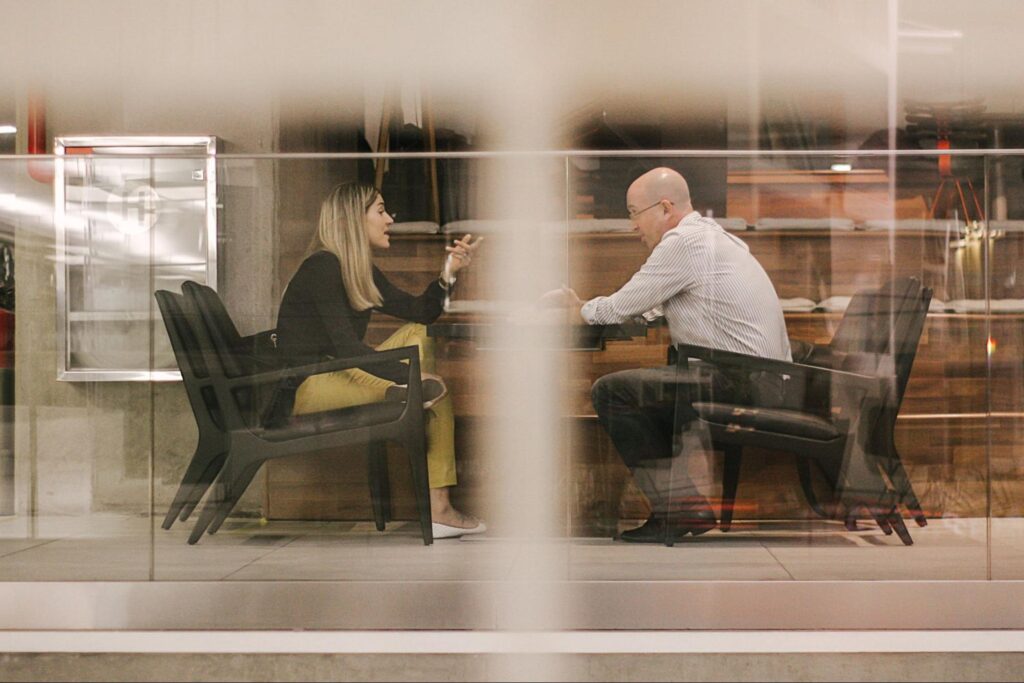If you’ve been a part of product design or product management, you’re sure to have heard someone or the other say, ‘Everyone is a UXer.’ Invariably, the person saying this is a UX fellow themselves. But think about it a bit deeper – have you heard anyone ever say that about architects or graphic designers? Probably not.
UX design, being a broad term, fits in just about everywhere so much so that everyone harbors an opinion about it. Now, throw product management into the picture, and things get more complex. This is because when you have two teams whose objectives overlap as much as it does for these two, there’s fertile ground for conflicts.
Product Management vs. Product Design

Product management is tasked with conducting market research and competitor analysis. It also devises a product development strategy based on user research data and creates all the necessary documentation and knowledge base preparation, roadmap creation, teamwork setup, task assignment, and acceptance criteria description.
Product design, on the other hand, applies various research techniques to gather user needs, to better understand them, and develop empathy. Then, it synthesizes the collected data and documents it in the form of a Product Requirements Document along with product management, providing it with necessary sketches, user journey maps, and user personas. This is followed by ideation for the most appropriate solution – options for which are tested and refined before being moved to development.
What breeds the Design-Management conflict?

Let’s roll back to a couple of decades ago – times when the marketing team of a company was mainly responsible for the 4Ps – product, price, place, and promotion. The role of designers back then was to merely create the product enticing enough to sell. Design was a function within the marketing sphere and designers mainly worked under marketing managers.
Over the years, design gained its due recognition perhaps as people experienced the iPod and then the iPhone. Thanks to these products, businesses were hit with the realization that people enjoyed these products not just because they looked beautiful (of course they did), or that they functioned like a dream (yes they did), but that they served them in a way no other product had done before. These products took into account the entire user journey, resolving all the pain points within it rather than just design a thing of beauty.
As design began to permeate businesses, designer positions found their way into organizations as per the design maturity of the said company. Now, there exist 3 basic models of reporting –
A centralized system, with the team members reporting to a UX manager, and functioning as consultants to the other departments in the organization.
A decentralized system where individual design professionals are a part of separate teams throughout the organization and work on specific features, products, or lines of business.
A hybrid system where UX professionals report both to a centralized UX manager as well as a product manager. Thus, the UX team is managed by both, a UX-specific lead and an individual product lead.
For a long time, designers have been pushing for the proverbial seat at the executive table, wanting to be involved in business decisions. When traditionally structured companies begin to make the transition to a design-driven mindset, it can lead to friction between the product management and design teams.
This transition involves hiring a UX designer or two who report to the product manager, and are neither expected nor allowed to make business decisions (following the decentralized structure).
Slowly, as the impact and RoI of design become more and more apparent, the design team grows (depending upon the need of the company, of course), forming a centralized or a hybrid system. This can lead to scenarios wherein product management sensing that designers, as creative people, lack the necessary business acumen. Designers, on the contrary, find reasons to believe that they have little to no say in business decision-making, which eventually has a domino effect impacting the user experience.
Another reason for the conflict is that design is seen more as a deep-dive, introspective, analytical role, whereas product management requires efficient, bird’s eye-level multi-tasking, which is probably why management tends to take on the leadership side of things.
Tips for design heads and PMs to work together in sync
Keep an open mind about collaboration

As mentioned in the introductory section, product management and product design have an overlap in terms of functions they have to perform, and this ensures that a lot of people are looking after the big picture. But when specific roles aren’t defined, it can cause unproductive power struggles. Therefore, PM and design have to cleverly navigate the ambiguity of their overlapping functions. How do they do that? By keeping an open mind about how they collaborate, as much as they can.
The best projects will have designers and PM collaborating on user research, creating journey maps, or even ideation. In fact, ideation is the best phase for collaboration, since it brings varied perspectives to the table. And, product management is bound to bring in a highly insightful perspective to the ideation table.
But there will be a time when design takes the lead on user research, or PM generates some very valid concepts during ideation or even contributes with lo-fi sketching. It is best left to whoever has the time, skills, and interest, to successfully accomplish the task at hand, rather than who is traditionally tasked with it. In case duties are unclear, have an open discussion and gain the best outcome from it.
Communication should be a two-way street

Most teams have a set manner of communication within themselves but can bristle up when the same camaraderie is to be replicated with another team. The ‘us against them’ mindset can derail collaborations of those teams that work seamlessly on their own. The highlight here is that product management and product design have to work together – unlike say design and accounts which rarely cross paths. An efficient communication system is what will keep this machinery well-oiled and nip any festering resentment in the bud. Sharing documentation and findings on a shared drive, using enterprise communication tools such as Slack or project management tools such as Basecamp, Jira, or Trello will aid communication and keep both sides updated. So, whatever system works for you – be it daily updates or weekly reports – keeping each other in the know about the project’s progress will ensure that the small sparks do not blow up into a ravaging fire.
For the users’ sake, be on the same page

A survey conducted by the NN group reveals that design and product management professionals disagree on who should be responsible for many key tasks, like doing discoveries and early design. It is this ambiguity that leads to inefficiency and leaves a negative impact on outcomes.
The customers or end-users have nothing to do with the internal skirmishes within teams. What will affect them, however, is if those skirmishes reflect on their experience of the product and leave a bad impression. Product management and design can come together to create a common voice of the product and deliver a seamless, unified experience. For instance, it is better for design and PM to demarcate and assign tasks at the start of the project, beginning with research and moving on to ideation, rough sketching, and defining workflows – specify who would be responsible for what. Doing so at the commencement stage will ensure (at least to a great degree) that both teams know what the other is responsible for and remain on the same page. These clear demarcations will also encourage collaboration between the teams so that no particular side feels like it’s being burdened. Just as you will iterate on your product, iterate on your relationship and your roles. Things will change, and you will need to change as well.
Why not strike gold out of the rivalry mine?

There can be an upside to the bristling energy between design and product management. As Apple’s former chief design officer, Sir Jony Ive said, “The best ideas start as conversations.” Both teams need to work together intentionally and more often and benefit from each other’s perspectives. For example, while design is focused on the user’s perspective, product management emphasizes on market strategy and business outcomes. Constructive conversations will help bring these two perspectives together to create a better product. Ideation sessions can benefit a great deal from this as these diverse minds come up with rich solutions that enhance the end result.
Willful cooperation of product designers and product managers is the key to creating a great product, along with proactive communication and mutual understanding. The most efficient product managers value UX, design thinking, and the job designers perform, just as designers acknowledge and understand the motivations of product managers, their functions and always aim at fruitful cooperation.











